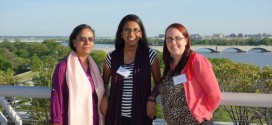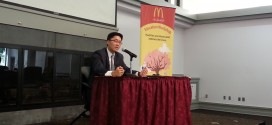By Aurora de Peralta
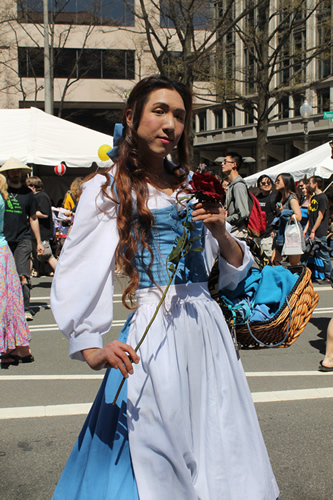
Washington, D.C. – The Japan-America Society of Washington, DC held its 54th annual Sakura Matsuri Festival on April 12. Held each year as the climax of the National Cherry Blossom Festival, Sakura Matsuri today is the nation’s largest one-day display of Japanese culture.
This year, thousands of attendees from all ages and ethnicities crowded the six-block festival expanse in downtown D.C. The festival featured numerous Japanese food and merchandise vendors and more than 50 performers on four separate stages. A major sponsor this year was McDonald’s, which had a booth at the festival where attendees could receive complimentary tote bags with McDonald’s gift cards and calendars.
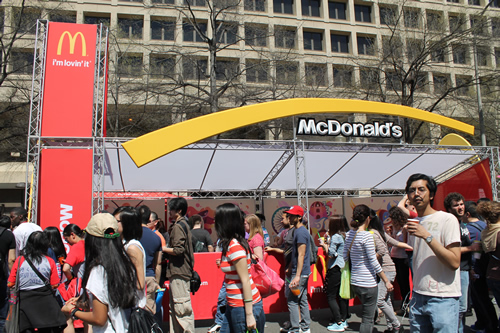
Among the festival performers were the Waidako drumming team and Buyou dance team from Yamagawa University in Tokyo, Japan. The teams have been performing at the Sakura Matsuri Festival for 16 years.
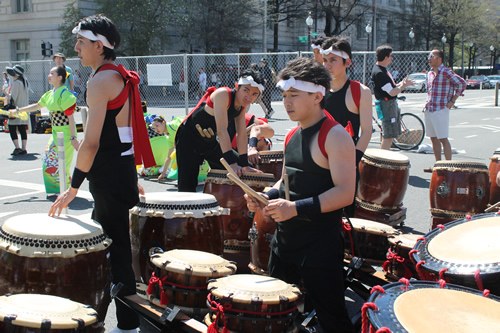
For festival attendees Sarah Haider, 26, and Jiro Okada, 23, the Yamagawa performance presented a unique opportunity for Americans to connect with Japanese culture firsthand.
“They bring extremely positive things from Japan to here,” Okada said, who hails from Japan. “It’s not easy for them to speak English. But their performance is a very strong means of communication.”
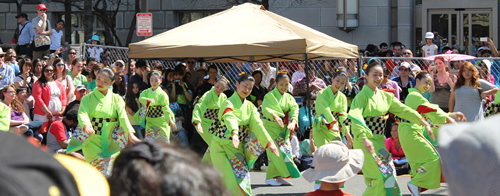
Haider agreed. “It’s great in terms of cultural exchange, obviously, and also for us to see what young people across the world are doing. For us to see in Japan that there are these students doing traditional performances is an eye-opening experience.”
Numerous exorbitantly-dressed cosplayers also drew the attention of attendees. Cosplay is the practice of dressing and acting like a character, typically from an anime or manga. Since the practice draws heavily from Japanese pop culture media, cosplay is closely associated with Japan.
But, for five men cosplaying as the crew from the anime ‘One Piece,’ cosplay is a Japanese cultural export that has expanded far beyond the archipelago.
“It’s a whole lot wider than it used to be. It used to be something small you only saw at conventions,” said Brad Ray, 25, who dressed as the character Roranoa Zorro. “Not only do we enjoy it, but people who see us enjoy it too.”
In fact, the ‘One Piece’ cosplay crew was a crowd favorite at the festival.
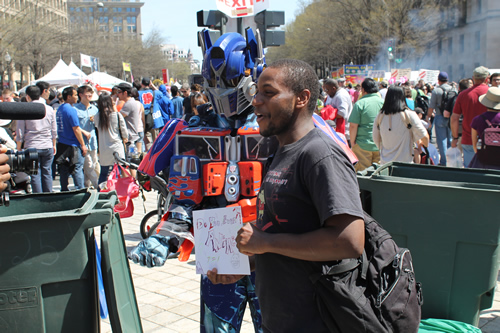
“I don’t think we can walk a few blocks without getting stopped for photos,” said Chris Pegues, who dressed as the character Sanji. “It’s hard to get food.”
Festival vendor Kat Hunter of Kat’s Anime Hats also sparks American interest in Japanese culture by selling handmade custom hats, plushies and accessories. Inspired by the octopus mascots of Japanese takoyaki stands, Hunter makes handmade octopus plushies in a variety of colors and sells them with birth certificates. Each birth certificate includes a basic Japanese name, such as “Sakura,” along with the name’s English meaning.
Hunter, who has been a vendor at Sakura Matsuri for five years, believes that the festival gives its attendees perspective on world culture.
“Sometimes it’s nice to have that different culture to look at your own and think, ‘Maybe we could do this better, or maybe we could take an aspect of the culture and put it in our own rather than being very us-centric,’” Hunter said. “That’s why any cultural event like this is important.”
 Asian Fortune Your source for all things Asian American
Asian Fortune Your source for all things Asian American
